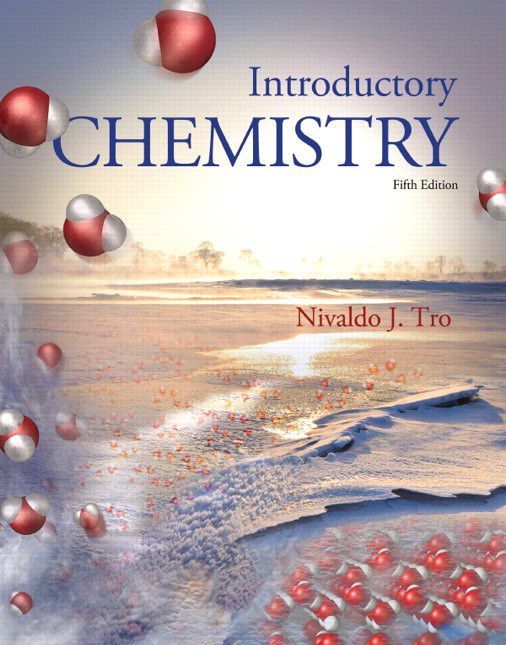Ch.3 - Matter and Energy

Chapter 2, Problem 121
Epsom salts is a hydrated ionic compound with the following formula: MgSO4 • x H2O. A 4.93-g sample of Epsom salts is heated to drive off the water of hydration. The mass of the sample after complete dehydration is 2.41 g. Find the number of waters of hydration (x) in Epsom salts.
 Verified step by step guidance
Verified step by step guidance1
Step 1: Calculate the mass of the water driven off during the heating process. This can be done by subtracting the mass of the dehydrated sample from the original mass of the sample.
Step 2: Convert the mass of the water and the dehydrated sample (MgSO4) to moles. The molar mass of water (H2O) is approximately 18.015 g/mol and the molar mass of MgSO4 is approximately 120.37 g/mol.
Step 3: Divide the number of moles of water by the number of moles of MgSO4. This will give you the ratio of moles of water to moles of MgSO4, which is the value of x in the formula MgSO4 # x H2O.
Step 4: If the ratio is not a whole number, it may need to be rounded to the nearest whole number, as the number of waters of hydration (x) in a compound is typically a whole number.
Step 5: The value of x obtained is the number of waters of hydration in Epsom salts.

Verified video answer for a similar problem:
This video solution was recommended by our tutors as helpful for the problem above.
Was this helpful?
Key Concepts
Here are the essential concepts you must grasp in order to answer the question correctly.
Hydrated Ionic Compounds
Hydrated ionic compounds, like Epsom salts (MgSO4·xH2O), consist of ionic species combined with water molecules. The 'x' in the formula represents the number of water molecules associated with each formula unit of the ionic compound. Understanding this concept is crucial for determining the amount of water lost during dehydration and calculating the value of 'x'.
Recommended video:
Guided course

Ionic Hydrates Naming
Mass Loss and Stoichiometry
Stoichiometry involves the quantitative relationships between reactants and products in a chemical reaction. In this case, the mass loss during the heating of Epsom salts indicates the amount of water that was present. By applying stoichiometric principles, one can relate the initial mass of the hydrated compound to the mass of the dehydrated compound to find the number of water molecules.
Recommended video:
Guided course

Stoichiometry Concept
Molar Mass Calculation
Calculating molar mass is essential for converting between grams and moles of a substance. To find 'x', one must first determine the molar mass of both the hydrated and dehydrated forms of Epsom salts. This calculation allows for the determination of the number of moles of water lost, which directly correlates to the value of 'x' in the hydrated formula.
Recommended video:
Guided course

Molar Mass Calculation Example
0
